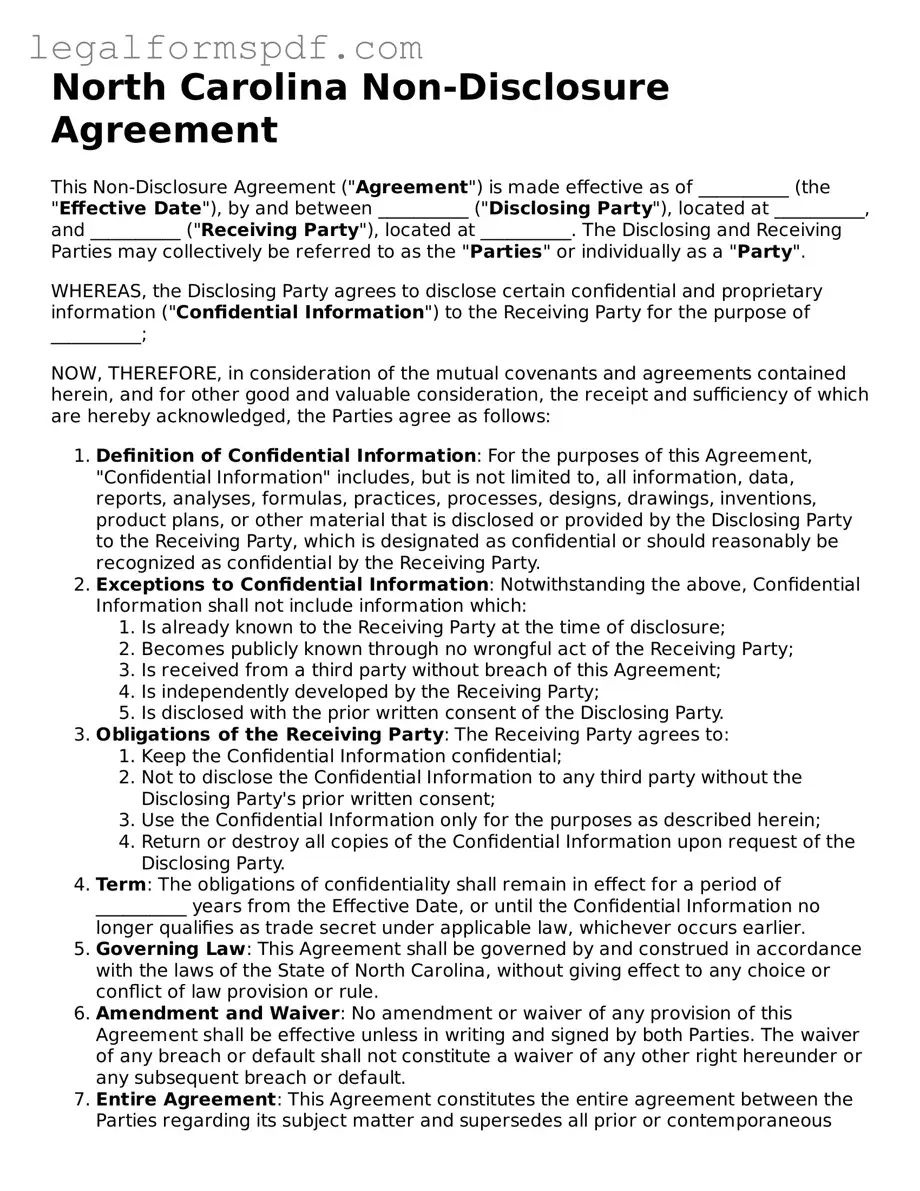What is a Non-disclosure Agreement (NDA) in North Carolina?
An NDA in North Carolina is a legal contract between two or more parties. It's designed to protect confidential information. When you sign this agreement, you're promising not to share sensitive details with anyone outside of those explicitly allowed by the agreement.
Why is an NDA important?
An NDA is crucial for protecting business secrets, personal information, or any data that should not become public. It ensures that the information shared in a professional context stays secure and used for its intended purpose, helping to maintain trust and integrity within business relationships.
What types of information can be protected under an NDA in North Carolina?
Under a North Carolina NDA, various types of information can be protected. This includes but is not limited to business strategies, customer lists, proprietary processes, and trade secrets. Essentially, any information that provides a business with a competitive edge and is not publicly known can be covered.
How long does a Non-disclosure Agreement last in North Carolina?
The duration of an NDA can vary. It is determined by the terms agreed upon by the parties involved. Some agreements last indefinitely, meaning the confidentiality obligations remain even after the business relationship ends, while others may specify a period after which the information can be disclosed.
Can anyone sign an NDA in North Carolina?
Yes, as long as the individual or entity signing the agreement has the legal capacity to do so. This means they understand the agreement and its implications. Minors and those not of sound mind may not meet these criteria, and as such, special considerations may be needed.
Is a North Carolina NDA enforceable if it's not notarized?
Yes, an NDA in North Carolina does not need to be notarized to be enforceable. The critical factor is that it is signed by all parties involved. However, having it notarized can add an extra layer of validation, especially if its authenticity is ever challenged in court.
What happens if someone breaks an NDA in North Carolina?
If someone breaks an NDA, they could face legal consequences. These may include monetary damages for any harm caused by the breach or an injunction preventing them from further disclosing any protected information. The specific consequences depend on the terms outlined in the agreement and the nature of the violation.
Can a Non-disclosure Agreement be terminated early in North Carolina?
Yes, an NDA can be terminated early if all parties agree to it. This agreement must be documented in writing. Sometimes, the initial agreement may also specify conditions under which the NDA can be terminated early.
Are there any exceptions to what is protected under an NDA in North Carolina?
Yes, there are exceptions. Generally, information that is already publicly known, independently developed, or rightfully received from another source without a confidentiality obligation, may not be protected under an NDA. Additionally, information that must be disclosed by law is not covered under the confidentiality obligations of an NDA.
